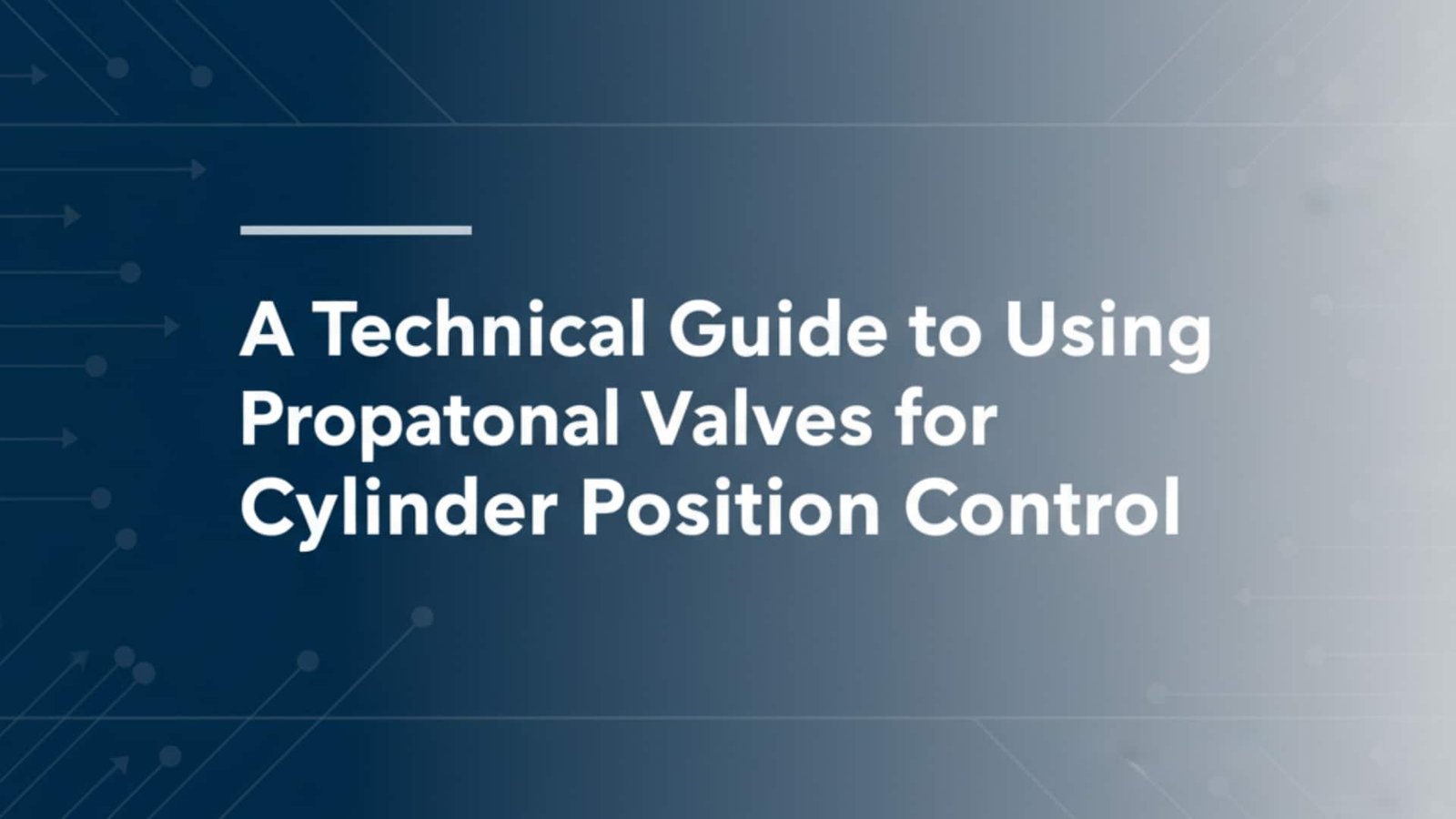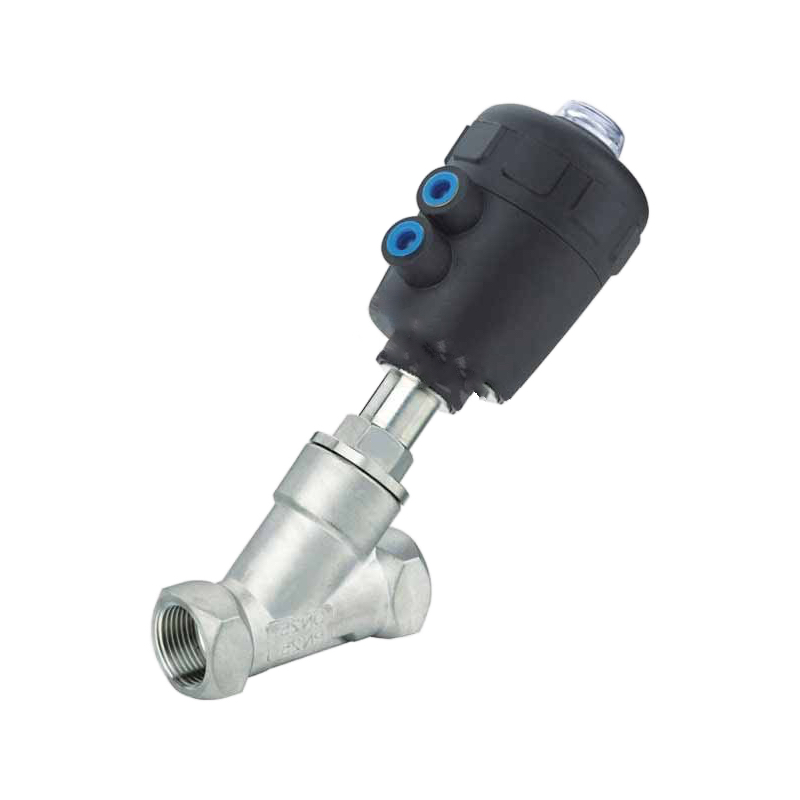Imprecise cylinder positioning costs manufacturers millions in rejected parts, rework, and production delays. Traditional on/off valves create jerky movements and poor positioning accuracy that destroys product quality and wastes valuable materials.
Proporcionālie vārsti nodrošina precīzu cilindra stāvokļa kontroli, nodrošinot mainīgu plūsmas ātrumu un spiediena regulēšanu, ļaujot nodrošināt vienmērīgu paātrinājumu, palēninājumu un precīzu pozicionēšanu ar atgriezeniskās saites sistēmām rūpnieciskās automatizācijas lietojumiem, kam nepieciešama milimetru precizitāte.
Last week, I received a call from David, a production engineer at a packaging facility in Michigan, whose assembly line was experiencing 12% reject rates due to inconsistent cylinder positioning that caused misaligned product placement. 😤
Satura rādītājs
- What Are Proportional Valves and How Do They Control Cylinder Position?
- How Do You Select the Right Proportional Valve for Your Cylinder Application?
- What Are the Best Practices for Installing and Tuning Proportional Valve Systems?
- How Can You Troubleshoot Common Proportional Valve Position Control Issues?
What Are Proportional Valves and How Do They Control Cylinder Position? ⚙️
Understanding proportional valve technology is essential for achieving precise cylinder positioning in modern automation systems.
Proportional valves control cylinder position by modulating flow rate and pressure through variable orifice openings, enabling smooth velocity control, precise stopping positions, and programmable motion profiles that standard on/off valves cannot achieve.
Proporcionālā vārsta darbības principi
These advanced valves use electronic control signals to vary internal flow passages for precise motion control.
Key Components
- Proportional solenoid: Converts electrical signals to mechanical valve movement
- Spoles vārsts: Variable orifice that controls flow rate based on position
- Feedback sensor: Position or pressure feedback for slēgtā cikla kontrole1
- Electronic controller: Processes control signals and manages valve response
Position Control Methods
Different approaches to achieving accurate cylinder positioning using proportional technology.
| Kontroles metode | Precizitāte | Reakcijas laiks | Izmaksu faktors | Labākais pieteikums |
|---|---|---|---|---|
| Open-loop control | ±2 mm | Fast | 1x | Vienkārša pozicionēšana |
| Closed-loop position | ±0,1 mm | Vidēja | 3x | Precīza montāža |
| Servo positioning | ±0,01 mm | Mainīgs | 5x | High-precision work |
| Spēka kontrole | ±1% force | Lēnais | 4x | Delicate handling |
Advantages Over Standard Valves
Why proportional valves deliver superior performance for position-critical applications.
Veiktspējas ieguvumi
- Vienmērīga kustība: Eliminates jerky movements and mechanical shock
- Mainīgs ātrums: Programmable acceleration and deceleration profiles
- Precīza pozicionēšana: Repeatable accuracy within tight tolerances
- Energoefektivitāte: Reduced air consumption through optimized flow control
At Bepto, we’ve integrated proportional valve compatibility into our rodless cylinder designs, enabling customers to achieve positioning accuracies that were previously impossible with standard pneumatic systems. 🎯
How Do You Select the Right Proportional Valve for Your Cylinder Application? 🔧
Proper valve selection is critical for achieving optimal positioning performance and system reliability.
Selecting proportional valves requires matching flow capacity to cylinder volume and speed requirements, choosing appropriate control resolution for positioning accuracy, and ensuring compatibility with system pressure and environmental conditions.
Plūsmas ātruma aprēķini
Determining the required valve flow capacity for your specific cylinder and application needs.
Calculation Factors
- Cylinder volume: Bore size and stroke length determine air volume requirements
- Cikla ilgums: Desired positioning speed affects required flow rates
- Spiediena kritums: System pressure losses must be considered in sizing
- Drošības rezerve: 20-30% additional capacity for reliable operation
Control Resolution Requirements
Matching valve control precision to your positioning accuracy needs.
Resolution Considerations
- Input signal resolution: 12-bit, 16-bit, or analog control options
- Pozicionēšanas precizitāte: Required repeatability determines control precision
- System stiffness2: Mechanical compliance affects achievable accuracy
- Vides faktori: Temperature and vibration impact precision
Vārstu konfigurācijas opcijas
Different proportional valve types for various cylinder control applications.
Configuration Types
- 3/3 proportional: Basic flow control for single-acting cylinders
- 5/3 proportional: Full control for double-acting cylinder applications
- Pilot-operated: High flow capacity for large cylinder applications
- Direct-operated: Fast response for small to medium cylinders
Sarah, who manages a medical device assembly line in California, switched to our Bepto rodless cylinders with proportional valve control and achieved 0.05mm positioning accuracy, reducing her reject rate from 8% to less than 1%. 🚀
What Are the Best Practices for Installing and Tuning Proportional Valve Systems? 🛠️
Proper installation and tuning are essential for maximizing proportional valve performance and reliability.
Best practices include proper valve mounting with vibration isolation, clean compressed air supply with adequate filtration, systematic tuning of control parameters, and regular calibration to maintain positioning accuracy over time.
Uzstādīšanas prasības
Critical factors for successful proportional valve system installation.
Uzstādīšanas kontrolsaraksts
- Tīra gaisa padeve: 5-micron filtration minimum, moisture removal essential
- Stable mounting: Vibration-free installation prevents control instability
- Proper wiring: Shielded cables for control signals, proper grounding
- Spiediena regulēšana: Stable supply pressure for consistent performance
Noskaņošanas parametri
Key control parameters that must be optimized for your specific application.
| Parametrs | Funkcija | Tipisks diapazons | Tuning Impact |
|---|---|---|---|
| Proportional gain3 | Response sensitivity | 0.1-10.0 | Pozicionēšanas precizitāte |
| Integral time | Stabila stāvokļa kļūda | 0.1-2.0s | Final position precision |
| Derivative time | Damping control | 0.01-0.5s | Stability and overshoot |
| Dead band | Control threshold | 0.1-5.0% | Sensitivity to small signals |
Kalibrēšanas procedūras
Regular calibration ensures consistent positioning performance throughout system life.
Calibration Steps
- Zero point calibration: Establishing accurate reference positions
- Span calibration: Verifying full-range positioning accuracy
- Linearity check: Confirming proportional response across range
- Atkārtojamības testēšana: Validating consistent positioning performance
How Can You Troubleshoot Common Proportional Valve Position Control Issues? 🔍
Systematic troubleshooting helps identify and resolve positioning problems quickly.
Common proportional valve issues include poor positioning accuracy from contaminated air supply, hunting or oscillation4 from incorrect tuning parameters, and drift from temperature changes or component wear, with solutions involving system cleaning, parameter adjustment, and component replacement.
Common Problem Symptoms
Identifying typical issues that affect proportional valve positioning performance.
Symptom Analysis
- Pozīcijas novirze: Gradual position changes indicate seal wear or contamination
- Hunting oscillation: Control instability from excessive gain settings
- Slikta atkārtojamība: Inconsistent positioning suggests mechanical wear
- Lēna reakcija: Sluggish movement indicates flow restrictions or low pressure
Diagnostic Procedures
Step-by-step troubleshooting approach for systematic problem resolution.
Troubleshooting Steps
- Pressure verification: Check supply pressure stability and adequacy
- Signal verification: Confirm control signal integrity and calibration
- Mechanical inspection: Examine cylinder and valve for wear or damage
- Parameter review: Verify tuning parameters match application requirements
Profilaktiskā apkope
Regular maintenance practices that prevent positioning problems and extend system life.
Tehniskās apkopes grafiks
- Dienas: Visual inspection and performance monitoring
- Nedēļas: Filter replacement and pressure checks
- Ikmēneša: Calibration verification and parameter backup
- Katru gadu: Complete system overhaul and component replacement
David’s Michigan packaging facility implemented our recommended proportional valve tuning procedures and achieved 95% reduction in positioning errors, saving over $50,000 annually in reduced waste and rework. 💪
Secinājums
Proportional valves provide the precision control necessary for modern cylinder positioning applications, delivering accuracy and repeatability that traditional valves cannot match. ⚡
FAQs About Proportional Valve Position Control
Q: What positioning accuracy can I expect with proportional valve control?
Typical positioning accuracy ranges from ±0.1mm to ±2mm depending on system design and tuning. Our Bepto rodless cylinders with proper proportional valve integration consistently achieve sub-millimeter accuracy in most industrial applications.
Q: How much more expensive are proportional valve systems compared to standard valves?
Proportional valve systems typically cost 3-5 times more than standard on/off valves initially. However, the improved accuracy, reduced waste, and higher productivity often provide payback within 6-12 months through quality improvements and reduced rework costs.
Q: Can existing pneumatic cylinders be upgraded with proportional valve control?
Yes, most existing cylinders can be retrofitted with proportional valves and position feedback systems. We evaluate your current setup and recommend the most cost-effective upgrade path to achieve your positioning requirements.
Q: What maintenance is required for proportional valve positioning systems?
Regular filter changes, calibration verification, and parameter monitoring are essential. We provide comprehensive maintenance guides and support to ensure your proportional valve systems maintain peak performance throughout their service life.
Q: How do I know if my application needs proportional valve control?
Applications requiring positioning accuracy better than ±5mm, smooth motion profiles, or variable speed control typically benefit from proportional valves. Our technical team can evaluate your requirements and recommend the optimal control solution for your specific needs.
-
Learn about the fundamentals of closed-loop systems and how they use feedback to maintain a desired output. ↩
-
Explore the engineering concept of stiffness and how it affects a system’s deflection under load. ↩
-
Understand the “P” in PID control and how proportional gain affects a system’s response sensitivity. ↩
-
Find out what causes a control system to “hunt” or oscillate around its setpoint. ↩





